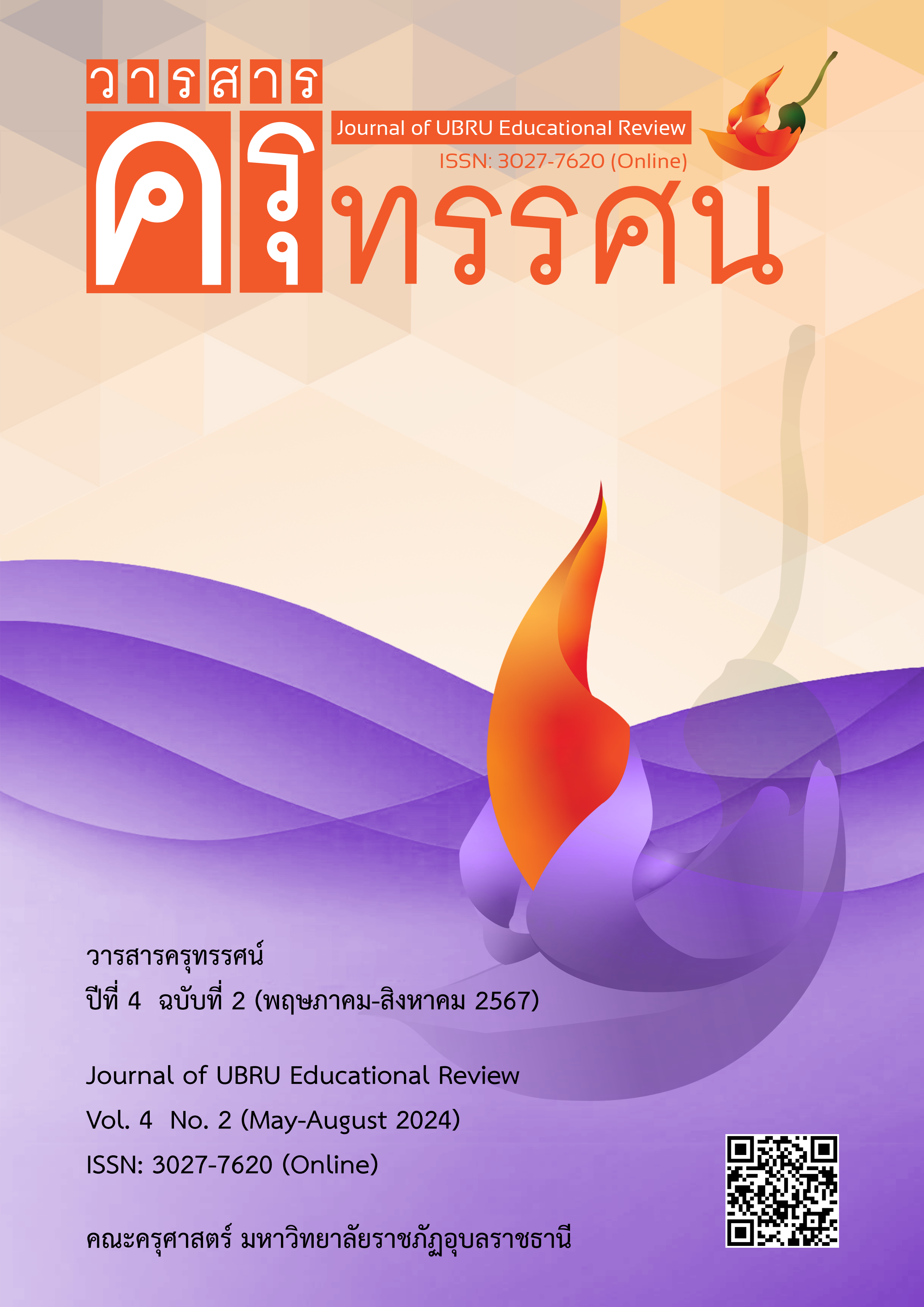ผลของการใช้วัฏจักรการสอนการพูดที่มีผลต่อคุณภาพการพูดของนักศึกษา มหาวิทยาลัยที่เรียนภาษาอังกฤษเป็นภาษาต่างประเทศ
Main Article Content
บทคัดย่อ
การวิจัยเรื่องผลของการใช้วัฏจักรการสอนการพูด (Teaching-Speaking Cycle) ที่มีต่อ คุณภาพการพูดของนักศึกษามหาวิทยาลัย ที่เรียนภาษาอังกฤษเป็นภาษาต่างประเทศ มีวัตถุประสงค์เพื่อศึกษาผลของการใช้วัฏจักรการสอนการพูดมีผลต่อคุณภาพการพูดมากน้อยเพียงใด ประชากรในการศึกษาคือนักศึกษาชั้นปีที่ 2 สาขาวิชาภาษาอังกฤษ คณะครุศาสตร์ มหาวิทยาลัยราชภัฏศรีสะเกษ จำนวน 62 คน โดยใช้แผนการสอนและวิธีการสอนโดยใช้วัฏจักรการสอนการพูด การสอบพูดและแบบประเมินระดับคุณภาพการพูด โดยใช้การวิเคราะห์ข้อมูลเพื่อหาค่าเฉลี่ย และส่วนเบี่ยงเบนมาตรฐาน ผลการวิจัยชี้ให้เห็นว่า การใช้วัฏจักรการสอนการพูดมาจัดการเรียนการสอนมีผลต่อคุณภาพการพูดทุกด้านอยู่ในระดับดี ค่าเฉลี่ยเท่ากับ 3.53 ส่วนเบี่ยงเบนมาตรฐานเท่ากับ 0.70 คุณภาพการพูดเพื่อแสดงความคิดเห็นในหัวข้อที่กำหนด อยู่ในระดับดีเนื่องจากวัฏจักรนี้ทำให้ผู้เรียนมีโอกาสได้เตรียมความพร้อม ทั้งด้านตัวผู้เรียนเองและด้านข้อมูลนำเข้าเพื่อใช้ในการพูด เช่น คำศัพท์และโครงสร้างประโยค ทำให้ผู้เรียนได้ทำความเข้าใจเกี่ยวกับภาระงาน นอกจากนี้ขั้นตอนการฝึกพูด การเน้นทักษะและกลวิธี และการสะท้อนการเรียนรู้ ยังช่วยให้ผู้เรียนได้ปรับปรุงการพูดให้มีคุณภาพมากขึ้นด้วย
Downloads
Article Details
เอกสารอ้างอิง
ณฤติยา เพ็งสรี. (2565). การพัฒนาความสามารถด้านการพูดภาษาอังกฤษเพื่อการสื่อสารของนักศึกษาชั้นปีที่ 4 มหาวิทยาลัยราชภัฏลำปาง. The Academic Journal: Faculty of Humanities and Social Sciences Nakhonsawan Rajabhat University, 9(1), 179-192
Bygate, M. (2001). “Effects of task repetition on the structure and control of language”, In Bygate, M., Skehan, P. and Swain, M. (Eds.). Researching Pedagogic Tasks: Second Language Learning, Teaching and Testing, Routledge, New York, pp.
-243.
Fernández, S. S., & Andersen, H. L. (2019). Oral proficiency in second and third foreign languages in the Danish education system. Apples – Journal of Applied Language Studies, 13(1), 49-67.
Goh, C. C. M. (2007). Teaching Speaking in The Language Classroom. SEAMEO Reginal Language Centre, Singapore.
Goh, C. C., & Burns, A. (2012). Teaching speaking: A holistic approach. Cambridge University Press.
Inprom, K., & Chalermnirundorn, N. (2020). The Use of the Teaching-Speaking Cycle Model to Improve the English Speaking Skills of Wing 4 Officers, Royal Thai Air Force. Proceedings of The 5th International Research Conference on Science and Technology, Social Science, and Humanities 2020 (pp. 1076-1084). Rangsit University.
Pipattarasakul, P., & Singhasiri, W. (2018). Metastrategies employed by science and engineering EFL learners in a speaking task. Journal of Asia TEFL, 15(1), 66.
Richards, J. C. (2008). Teaching listening and Speaking. Cambridge University press.
Robin, J. & Thompson, I. (1994). How to Be a More Successful Language Learner. 2nd Ed., Heinle & Heinle Publishers, Boston.
Rosario, M. (2019). The Road to Multi-literacy: Teaching Speaking Cycle and Foreign Language Speaking Anxiety. International Journal of Scientific and Research Publications, 9(4), 230-236.
Shu, H., & Renandya, W. A. (2016). A balanced approach to teaching L2 speaking in China. The English Teacher, (1), 45-63.
Thomas, N. (2019). Teaching L2 speaking: Recommending a holistic approach. rEFLections, 26(1), 134-145.


